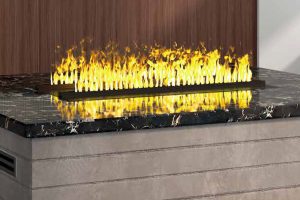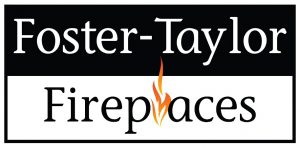As the chill of winter sets in, many seek the warmth and ambiance that a fireplace provides. Not only do fireplaces add to the aesthetic appeal of a room, but they also serve as a cozy source of warmth on cold nights. However, the enjoyment of a crackling fire should come with a sense of responsibility. Fireplace and chimney issues can pose significant hazards, risking both family safety and property. To mitigate these risks, here are essential tips to enhance fireplace safety and ensure a secure, warm environment during the winter months.
1. Clear the Hearth Area
Safety begins with preparation. Ensure the space around the fireplace is free from flammable materials such as rugs, furniture, and home décor. Establish a safe zone for children and pets, teaching them to maintain a safe distance from the heat. Clearing a path for emergency exits from the room is also crucial before igniting a fire.
2. Select the Proper Wood
The choice of wood significantly affects fireplace safety. Opt for well-seasoned hardwood, which burns cleanly and efficiently, reducing the risk of creosote buildup—a primary cause of chimney fires. Avoid using wet, rotten, painted, or treated wood. These not only produce harmful emissions but also contribute to creosote accumulation. Ensure the moisture content of the firewood is below 20% for optimal burning.
3. Install a Chimney Cap
A chimney cap acts as a protective barrier against external elements and debris, such as leaves and pine needles, which can block airflow and ignite. Regularly inspect the chimney cap and, if necessary, engage a professional to replace or repair it to maintain its protective function.
4. Conduct Regular Chimney Cleaning
Creosote buildup within the chimney is a fire hazard. Employ a professional chimney sweep annually to clean and inspect the chimney, removing any soot, debris, and creosote that have accumulated over time. This not only enhances safety but also improves the efficiency of your fireplace.
5. Utilize a Fireplace Screen
A fireplace screen is indispensable for preventing sparks and embers from escaping the fireplace, safeguarding nearby belongings and individuals. It acts as a barrier, keeping pets and young children at a safe distance, thus preventing accidental burns.
6. Properly Extinguish the Fire
Always ensure the fire is completely extinguished before leaving the room or going to bed. Allow the flames to subside, then carefully spread out the logs and embers before applying cool ashes. For added safety, sprinkle baking soda over the embers to help extinguish any remaining heat. Never leave a fire unattended.
By adhering to these safety tips, you can enjoy the benefits of your fireplace without compromising the safety of your home or loved ones. Remember, prevention is key to enjoying the comfort and warmth of your fireplace throughout the winter season. Regular maintenance and a cautious approach to fire management will ensure that your living space remains both cozy and safe.
